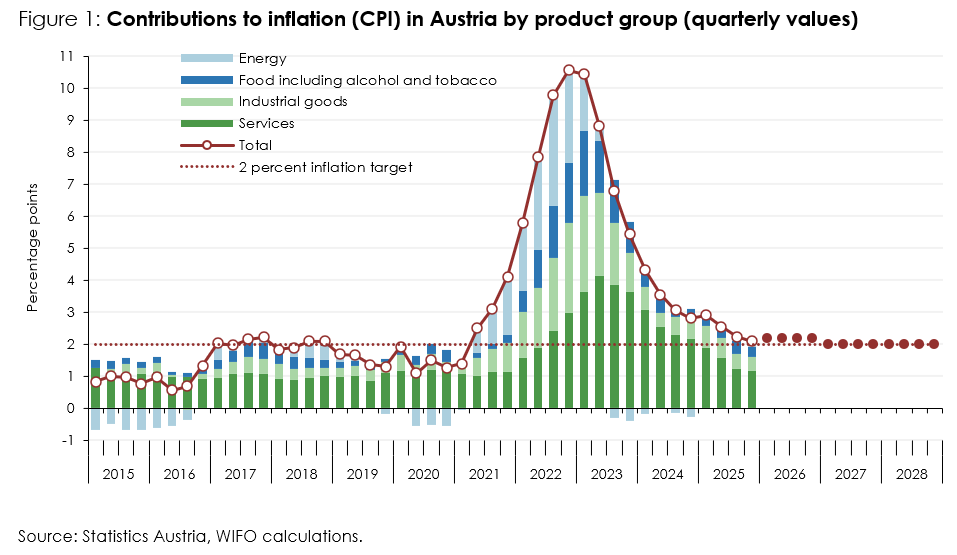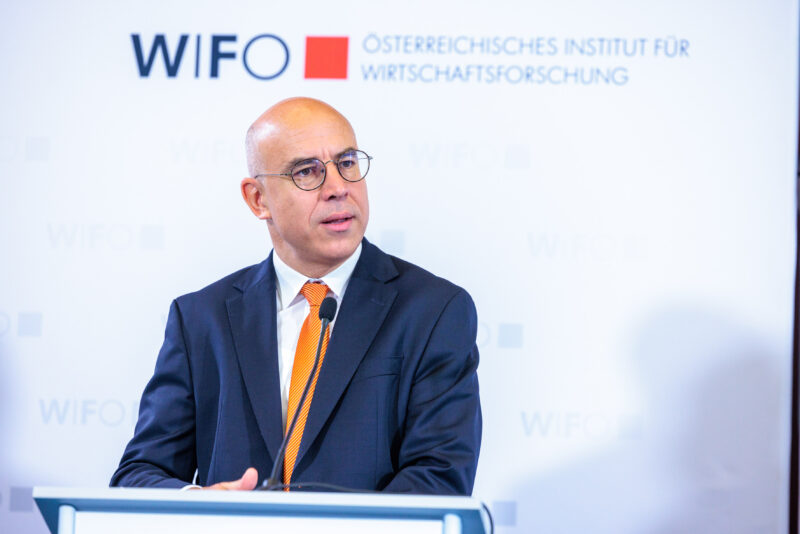
Inflation Forecast from 2024 till 2028
In 2023, the primary contributors to inflation underwent a shift, with energy prices becoming less significant and the areas encompassed by core inflation (industrial goods and services) assuming greater importance. This pattern is expected to persist in 2024, with labour-intensive services remaining the principal driver of inflation. The extent to which wage increases are passed on to prices is a key factor in this regard.
The inflation differential between Austria and the Eurozone in 2024-25 is likely to be primarily attributable to the higher price increases for services in Austria. The primary causes of this can be attributed to the markedly elevated wage growth and the greater proportion of indexation (including rents, mobile phone tariffs and insurance) in Austria.
Notwithstanding the decline in the rate of inflation and the narrowing of the inflation gap with the euro area, it is likely that Austria will remain within the group of euro area countries with higher inflation rates over the period 2024-25.

Publications
Please contact
















